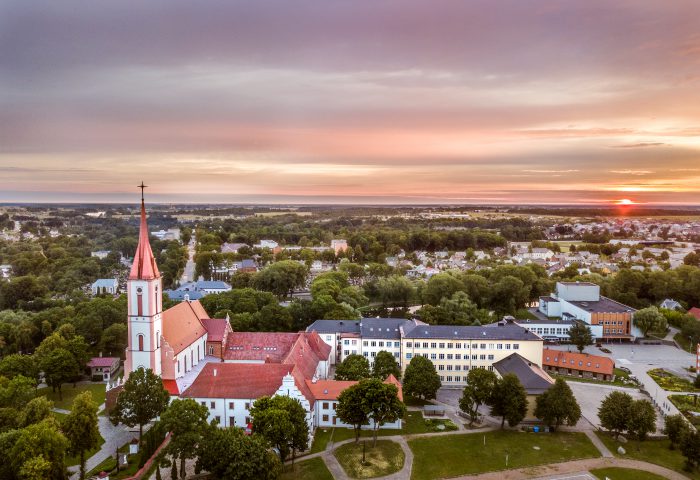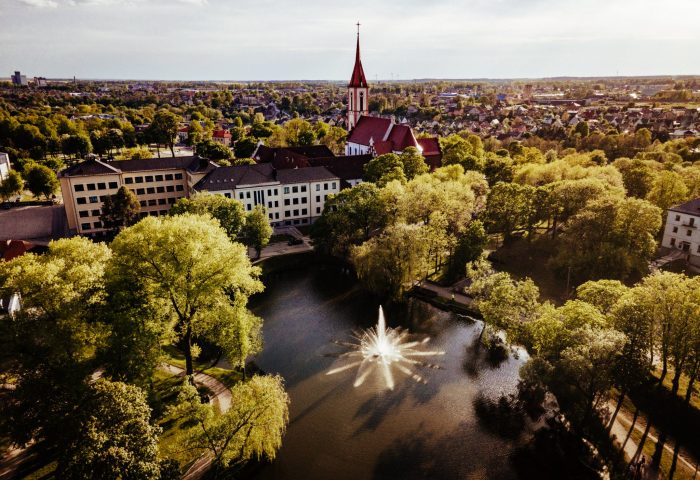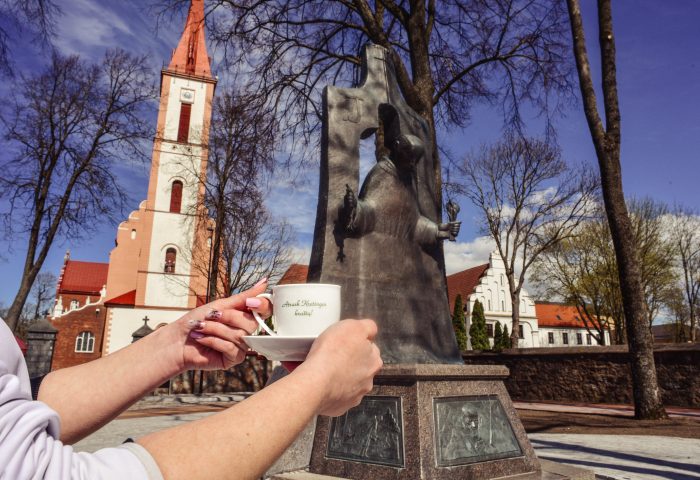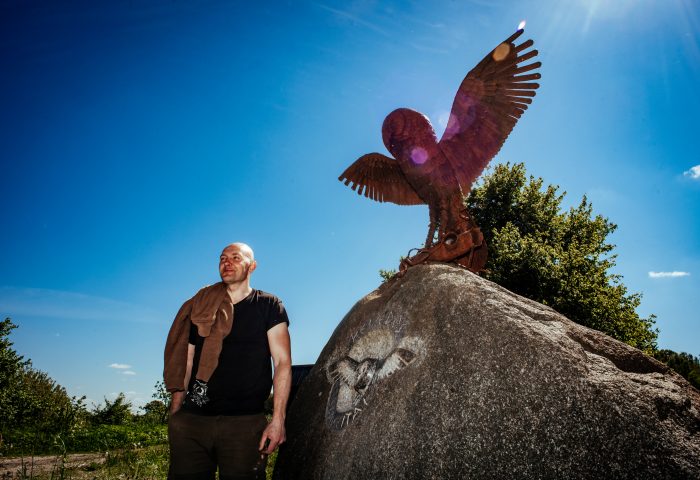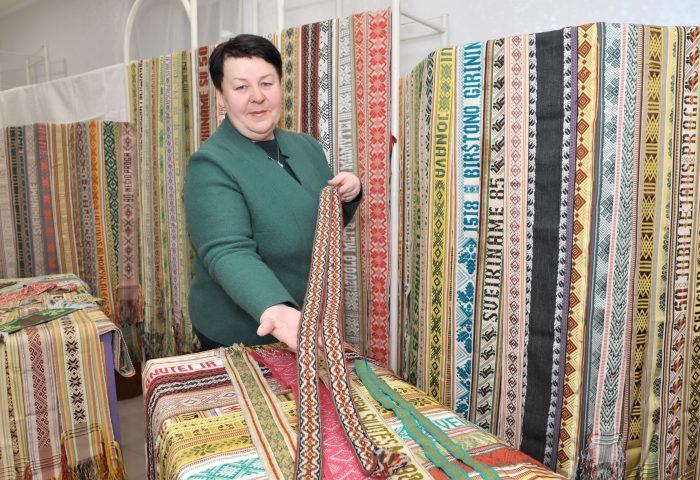Places to visit
Grave of the Lithuanian commander Vladas Nagius-Nagevičius
Registered cultural heritage object of national significance (unique code 32626). The political and public figure, founder of Vytautas the Great War Museum, doctor, archeologist, general Vladas Nagius-Nagevičius (1881–1954) is buried here.
The grave is marked by blackish brown granite slab of coarse grain with two engraved signs of the Order of the Cross of Vytis with swords and epitaph: "Volunteer-creator, founder of the War Museum, archeologist, doctor, general of the brigade Vladas Nagevičius. 1881–1954. Birutietė Veronika Baronaitė Nagevičienė. 1908–1987. buried in 1995". There is a wooden sculptural roofed pillar with the high-relief of Saint Michael the Archangel and wrought cross-sun (author: folk artist Adolfas Teresius, 2006) at the grave. In 2006, the grave was maintained on the initiative of Kaunas County of the Union of the Creators-Volunteers of the Lithuanian Armed Forces.
Vladas Nagevičius was born on 1880 June 17 in Kretinga. He studies in Palanga Progymnasium, Riga Gymnasium, Saint Petersburg Archaeological Institute and the Military Medical Academy. In 1905, he attended the Great Seimas of Vilnius for dissemination of the decisions of which in his homeland he was arrested and sentenced in Kaunas Court Palace. He served as a doctor in the Russian military navy since 1910. In summer of 1918, he came back to Lithuania, was appointed as the secretary of the Presidium of the Security Commission, on 23 November 1918, he was appointed as a member of the National Security Board, was involved in creation of the army. During the period between the two world wars, he was the head of the Sanitary Service in War, established the Sanitary School of Non-Commissioned Officers, Higher Military Sanitary Courses. In 1920, 1920, the lieutenant general degree was awarded to him and in 1936 the brigadier general degree was awarded to him. In 1920, he established the War Museum (it was officially opened on 16 February 1921) and was the head of the museum. He took care of commemoration of the fights of the Lithuanian nation for freedom and statehood, memory of the heroes of the nation, created the memorial garden of the War Museum. In 1922, he established the Lithuanian Armed Forces officers club "Ramovė“, in 1923 he established a seafarers' school. He is an initiator of establishment of the Order of the Cross of Vytis, a member of the Order of the Cross of Vytis since 1927, a member of the commissions on volunteer medal since 1928.
He was known as one of the first professional archeologists of Lithuania, carried out researches of the grave fields of the Western Lithuania, Apuolė hillfort and Senoji Įpiltis hillfort, represented Lithuania in international congressions of archeologists. He was actively engaged in public activities, established the corporation of the Lithuanian medical officers of the Military Medicine Academy "Fraternitas Lituanica", the Latvian-Lithuanian and Finnish-Lithuanian societies, the Lithuanian Seafarers' Union, the Commitee to Support Lithuanian Victims of War, the Grand Duchess Birutė Society, was the head of the Society for the Protection of Animals and the Society for the Embellishment of Lithuania, the Sports League of Lithuania, organised the Olympic movement. He was elected as a member of the Board of the Lithuanian Riflemen's Union and the Supreme Committee of Lithuania for establishment of the navy.
In 1944, he left for Germany and in 1949 he moved to the USA. He lived in Cleveland where on 15 September 1954 he died. In 1995, the remains were reburied in Kretinga. He was awarded for his merits with the Order of the Cross of Vytis of the Fifth Class (1920), the Order of the Cross of Vytis of Second Class (1928), the Order of Vytautas the Great of the Second Class (1936) and the Order of the Lithuanian Grand Duke Gediminas of the Second Class (1928), the Medal of Founding Volunteers of the Lithuanian Army and the Medal of the Independence of Lithuania (1928), the Order of the Star of Šiauliai (1931), the Order of the Swastika of scouts (1931), the Cross of Firefighters "Artimui pagalbon" (For the Saving of Precious Life) of the First Class (1938), the Medal of the Order of the Star of Šiauliai (1939), state orders and medals of Belgium, Czechoslovakia, Estonia, Latvia, Romania, Finland and Sweden. In 1930, The street in Kretinga in which the general was born was named after V. Nagevičius. In 2003, (after his death) he was recognised as the volunteer-soldier of Lithuania.

